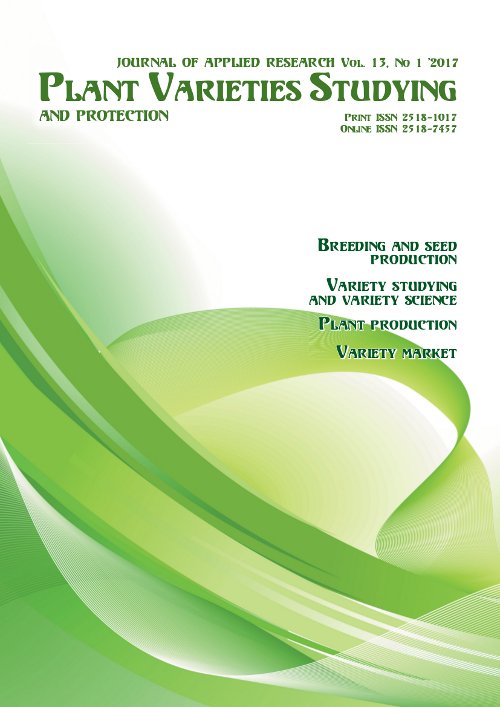Specific features of selection of promising hybrids of the genus Syringa for the variety testing
DOI:
https://doi.org/10.21498/2518-1017.13.1.2017.97315Keywords:
lilacs, variety testing, decorative effectAbstract
Purpose. To establish the reasons of submitting not highly decorative lilac hybrids to state variety testing so that unpromising varieties and look-alikes can be sometimes included in the world collection, and focus on solving this situation.
Methods. Analytical approach.
Results. It was established why and how unoriginal hybrids were submitted to state variety testing that for several reasons can allow them to obtain the status of variety.
Conclusions. In order to prevent obtaining the status of variety by some low decorative lilac hybrids, it is necessary that both a breeder and testing stations employer should use known presentable collections of identified varieties for evaluation of real value of a new hybrid. In Ukraine, there is such a collection at N. N. Gryshko National Botanical Garden of the National Academy of Sciences of Ukraine where more than 130 varieties and 21 species of the genus Syringa occupies the area of 2.35 ha. It is desirable to compare not only with the check variety that the breeder selected for his hybrid among such, but, if it is possible, with all varieties in the collection close to it by decorative effect. The problem is that the author of a hybrid, sometimes ignorantly or for some other reason, selects a check variety for his hybrid that is not the most decorative one among such, against which a candidate for variety status will be more attractive during its evaluation. In such a case, the breeder should change a check variety that permits to estimate really the decorative effect of a submitted hybrid.
Downloads
References
Rubtsov, L. I., Zhogoleva, N. A., & Lyapunova, N. A. (1961). Sad sireni [Lilac Garden]. Kiev: Izdatel'stvo AN USSR. [in Russian]
Gorb, V. K. (1989). Sireni v Ukraine [Lilacs in Ukraine]. Kiev: Naukova dumka. [in Russian]
Gorb, V. K. (2009). On the genetic identity of the species composition of dendrological collections in botanical gardens. In Problemy sovremennoy dendrologii: materialy Mezhdunarodnoy nauchnoy konferentsii, posvyashchennoy 100-letiyu so dnya rozhdeniya chl.-kor. AN SSSR P. I. Lapina [Current state of Modern Dendrology: Proc. Int. Conf., dedicated to the 100th anniversary of the birth of P. I. Lapin, associate member of the Academy of Sciences of the USSR] (pp. 84–87). June, 30 – July, 2, 2009, Moscow, Russia. [in Russian]
Downloads
Published
How to Cite
Issue
Section
License
Copyright (c) 2017 Ukrainian Institute for Plant Variety Examination

This work is licensed under a Creative Commons Attribution-ShareAlike 4.0 International License.
Starting in 2022, the copyright to the publication remains with the authors
Our journal abides by the CREATIVE COMMONS copyright rights and permissions for open access journals.
Authors, who are published in this journal, agree to the following conditions:
- The authors reserve the right to authorship of the work and pass the first publication right of this work to the journal under the terms of a Creative Commons Attribution License, which allows others to freely distribute the published research with the obligatory reference to the authors of the original work and the first publication of the work in this journal.
- The authors have the right to conclude separate supplement agreements that relate to non-exclusive work distribution in the form in which it has been published by the journal (for example, to upload the work to the online storage of the journal or publish it as part of a monograph), provided that the reference to the first publication of the work in this journal is included.

























 Ukrainian Institute for Plant Varieties Examination
Ukrainian Institute for Plant Varieties Examination  Селекційно-генетичний інститут
Селекційно-генетичний інститут Institute of Plant Physiology and Genetics of the National Academy of Sciences of Ukraine
Institute of Plant Physiology and Genetics of the National Academy of Sciences of Ukraine
 The National Academy of Agrarian Sciences of Ukraine
The National Academy of Agrarian Sciences of Ukraine